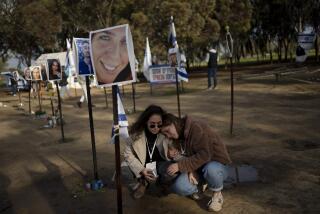A Struggle to Find the Right Tone
- Share via
They are love letters to New York. Weekly tributes to a precocious if self-involved city. Since the terrorist attacks, publications such as the New Yorker, New York magazine and the New York Observer have changed their content and style to mirror Manhattan’s grief. One publication, for example, pulled its signature cartoons; another, fluffy content. A third radically altered its caustic tone.
In the weeks and months to come, these publications face a defining challenge: to reflect, by striking the right tone and perspective, the ways in which the city and its inhabitants have changed.
“The last two weeks have been no-brainers,” said Seth Mnookin, a media writer for Inside.com and Brill’s Content. “There’s no way you can write about New York City and not write about this. But as they start to move toward their traditional mission, the question will be how they balance what they usually cover, and this.”
Tom Goldstein, dean of the Columbia Graduate School of Journalism, said the magnitude of events will force the change. “All magazines operate in a different world now,” he said, adding that the New York media landscape will change dramatically in the coming months. “There’s a seriousness and purpose that cuts across the board.”
The challenges are unique to each publication.
In the first few days after the attacks, New Yorker editor David Remnick studied how the magazine had responded to another historical turning point: World War II.
“I deliberately looked at the issues after Pearl Harbor,” he said. Before the war, he noted, the magazine was “predominantly humorous and light.” But, “as the war changed the world, it changed the New Yorker,” he said. “It forced depth upon the New Yorker.” A year after the United States dropped the atomic bomb on Hiroshima, the magazine devoted its entire Aug. 31, 1946, issue to John Hersey’s account of the bombing and its aftermath.
The New Yorker responded to the Sept. 11 events in several ways. For one thing, the entire content of the Sept. 24 issue was available on the Web--a first for the 76-year-old magazine. The cover of the first issue after the attack was “pure sorrow itself,” Remnick said. At first glance, the cover seemed entirely black. A closer look revealed the outline of the twin towers in a slightly different shade of darkness. Inside, there were no cartoons, just a single drawing inside depicting an old woman crying. The magazine has only been cartoon-less once before, in the Hiroshima issue.
In the current issue, and in the upcoming one due on newsstands Monday, the cartoons are back. “It’s a human need, even in grief, to have some semblance of normalcy. Our contribution is the essence of the New Yorker humor,” explained Remnick, adding the cartoons are chosen with even more care than usual, so as not to offend. The magazine will continue to cover the story, he said, but will not become a news weekly. “We are a magazine that people look to for both the timely and the timeless,” Remnick said.
For New York magazine, the aspiration has been different. It is, in the words of its editor, Caroline Miller, “to cover the social comedy of the city.” But the events of the last few weeks have meant having to reinvent the weekly “almost every day,” Miller said. “Not only have events been changing but the mood of New Yorkers has been changing, practically every day. And we have been covering the story as it unfolds.”
In the first issue after the attacks, the magazine chronicled the events in pictures and reports. In the second, it described New York in mourning. Both issues departed from the magazine’s fairly breezy and witty tone and did not include its regular gossip column. The upcoming issue will include the gossip column as well as a greater mix of stories, and even some practical advice on how to help the city, ranging from going to an endangered restaurant in TriBeCa, said Miller, to taking a romantic weekend and staying at a hotel.
In the coming weeks, the magazine will gradually resume coverage of more traditional subjects and services, including fashion, food and design. But, “we will be reintroducing it with an ear to the way New Yorkers are feeling,” she said. Readers expect the magazine to tease those who deserve it, said Miller, adding that it will continue to do that while perhaps refraining from its trademark ironic digs. “It’s true, cynicism has been one of the casualties of these events,” she said.
Nowhere is this more apparent than at the New York Observer, a weekly paper plugged into Manhattan society, money and media. After the attacks, the staff began rethinking the weekly’s acerbic tone and irreverence and focused on straight news and somber reflections on the aftermath. Observer editor Peter Kaplan said, “It doesn’t mean suppressing our fundamental sense of humor or ability to be critical, but when you have a city that’s suddenly in grief, and so is our staff, then your attitude has to change a little bit. More than a little bit.”
Mnookin, of Inside.com, said that the Observer may come of age, in the way the New Yorker did after World War II. “It’s a defining moment for the Observer,” Mnookin said. “They already have a team of first-rate reporters, and a top-notch editor. They could be at the forefront, helping to define what the tone is going to be around here in the future.”
He added that events may force change on the alternative weekly, the Village Voice, as well.
“The Voice is in a slightly different position. The challenge is not going to be one of tone. They ... didn’t have that sense of postmodern irony dripping through their pages.” The Village Voice should be careful to avoid “reflexive leftism,” Mnookin said. “They have some people on staff who have been working there for decades and who still think the dominant political struggle is fighting against ‘the man.”’
Village Voice editor Donald Forst dismisses such criticism and disagrees that the events will force a major change in the paper. “I don’t think we did anything different than we would have if we were covering a train wreck,” he said. “The most dramatic difference was that we devoted more pages [to cover the attacks]. And we ran consecutive pages” without ads. There was no radical change in tone in the Sept. 25 Village Voice, but its cover seemed odd. A photograph of a hand holding a postcard of the World Trade Center with the actual smoking skyline in the background had the headline, “Wish You Were Here.” Forst said the image was meant to be a tribute to the towers.
A rapid news cycle forced most publications to be nimble. At the New York Times Magazine, editors decided, for only the second time in its history, to use the Web to “distribute the magazine in something like real time,” said editor Adam Moss. In the 24 hours after the attacks, editors waited to see what they would get from writers and photographers. Within a few days, the Sept. 23 issue was being posted on the newspaper’s Web site. “We were hyper-conscious that the story was moving fast. Our fear was that the potency of those thoughts and images would lessen as the days went on.”
Remnick of the New Yorker agreed. “The challenge ranged from the imperative of speed to the notion of covering something so close to home, so horrifying, that to call it a story sounds banal,” he said. “While we publish stories about horrors of greater magnitude--civil war in the Congo that leaves a million dead--this was our backyard.”
More to Read
Sign up for Essential California
The most important California stories and recommendations in your inbox every morning.
You may occasionally receive promotional content from the Los Angeles Times.












